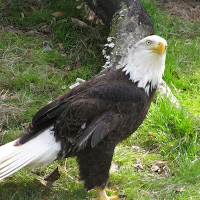Did you know it was legal to kill a bald eagle, a snowy owl, flamingo or any endangered bird? DDT was banned from general use in 1972 because of its effects on humans and wildlife, especially birds. The following year the Endangered Species Act was passed with the intention of protecting species that were on the brink of extinction. For many birds like the ivory-billed woodpecker, it was too late to save the species, but the endangered peregrine falcons, once-endangered bald eagles, and myriad birds have rebounded. The bald eagles were removed from the threatened and endangered list in 2007. However, last year hundreds of bald eagles were poisoned, along with other raptors. Add water birds (exposed to lead not only by ingesting lead shot, but also from lead fishing gear), such as loons, herons, egrets and ibises, to the list and the results are astonishing. What’s more astonishing is that the poison and its presence in our environment is not only legal, but also supported by a strong group of lobbyists.
In the May-June issue of Audubon magazine, Ted Williams has written an insightful article “Bad Shot” that address the issue of hunters using lead bullets and the effects lead has on wildlife. Williams reports that “hunters can leave up to 400,000 lead shotgun pellets on a single acre of prime upland hunting field in a year.” The result of ingesting lead is a fatal disease called plumbism. Last winter one hundred and seventeen bald eagles were brought in to the University of Minnesota’s Raptor Center. All had ingested high levels of lead, the result of which caused the birds to lose their motor skills and eyesight. None recover. By the time, the illness was detected, it was too late to save them.
Is there a solution? Of course, a simple one. Nontoxic bullets are available, but gun lobbyists claim that nontoxic bullets are too expensive. Williams found that this is simple not true. The cost of lead bullets and shot is comparable to the nontoxic variety.



Every year after the Trumpeter Swans leave the Skagit Valley, there are the handfuls of dead swans remaining in the fields. Autopsies always reveal stomachs full of lead shot. Sad.